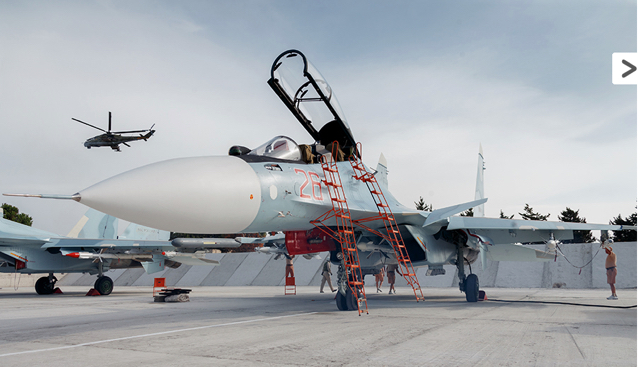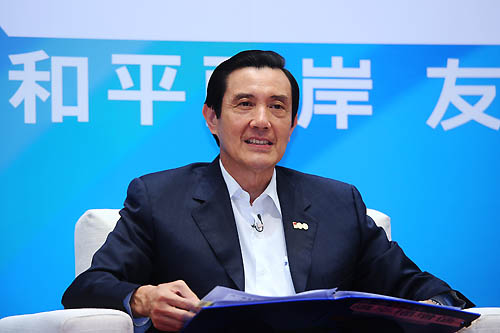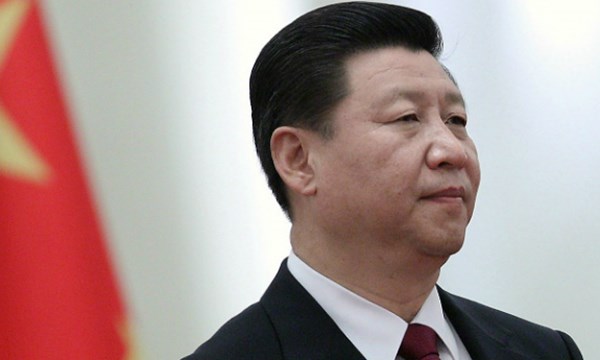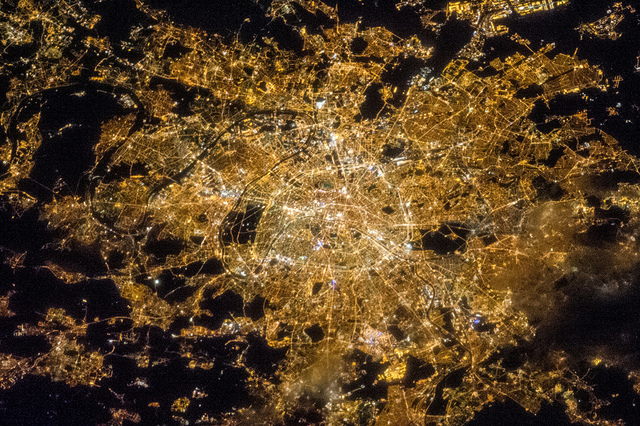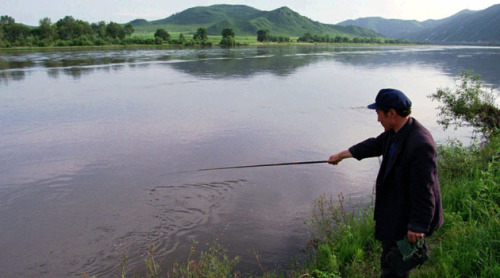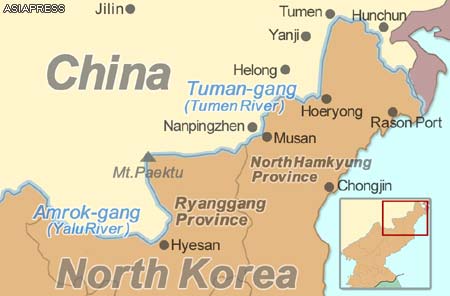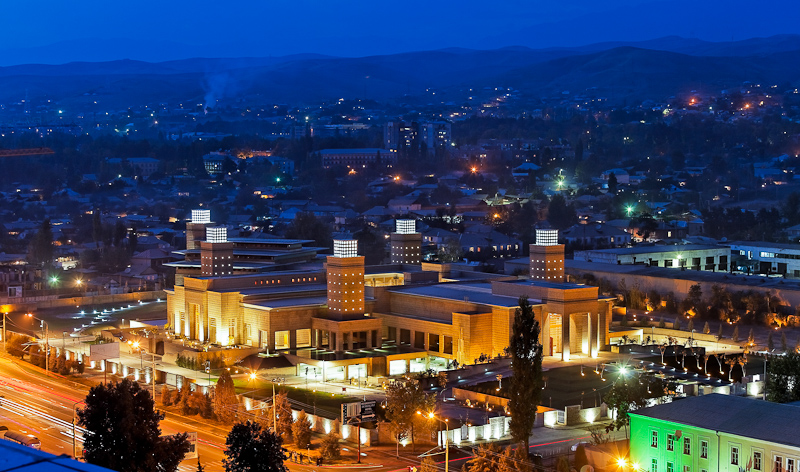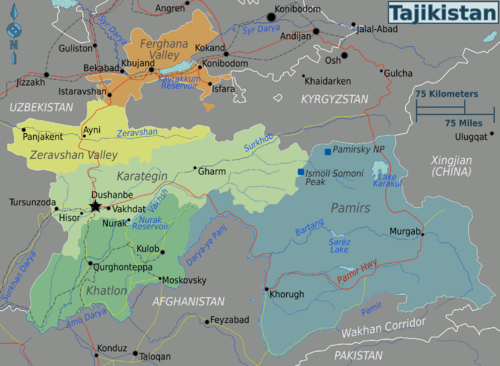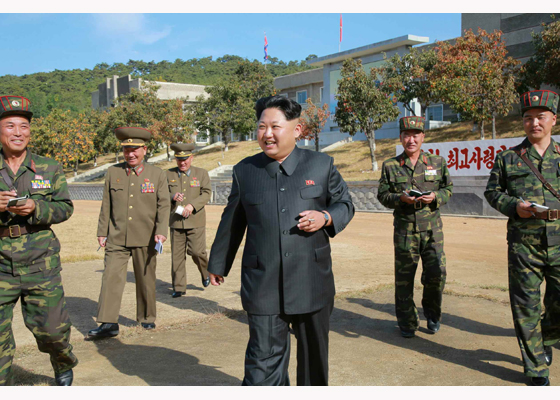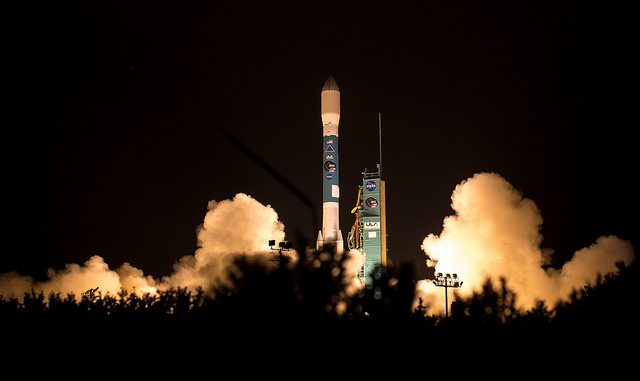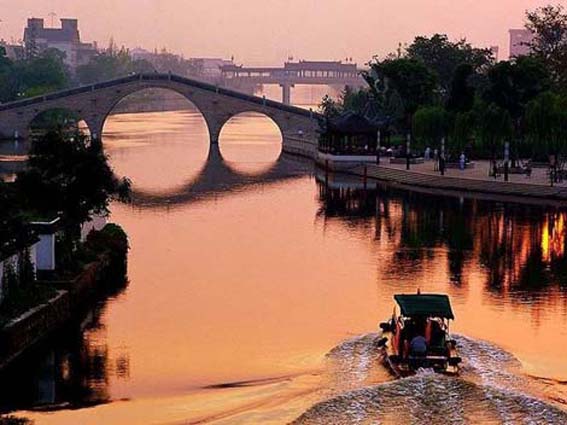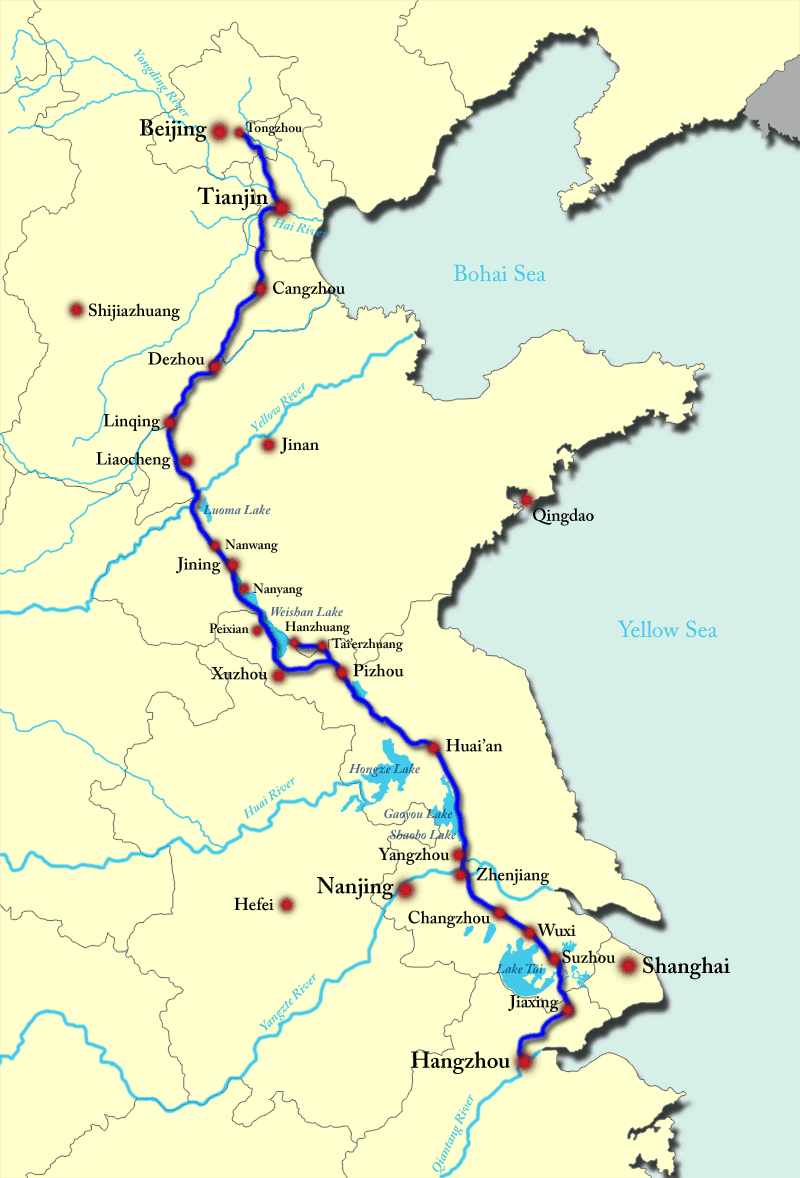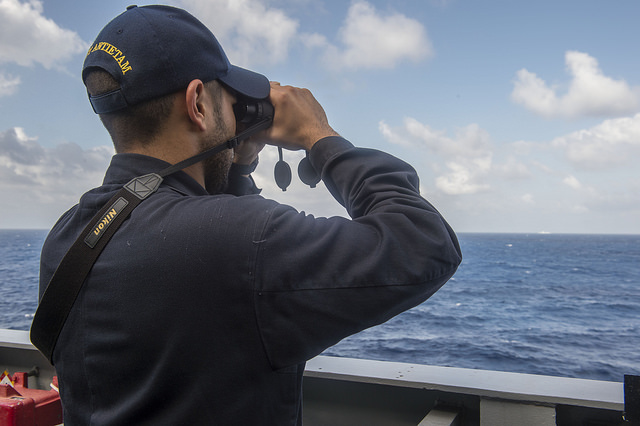“Let Us Stop Fearing Reform”
Led by Japan and the United States, countries that share the values of freedom, democracy, fundamental human rights, and the rule of law will work on creating an “ocean of liberty and prosperity” in the Asia-Pacific region. Yesterday, an agreement in principle was reached on the Trans-Pacific Partnership (TPP).
So began Mr. Abe at his press conference on October 6, 2015. Mr. Abe outlined the key points of the TPP agreement from the Japanese standpoint. He began by explaining how the agreement would benefit Japan in three areas:
- Making lives richer
- Providing Opportunities
- Protecting what must be protected
Mr. Abe then went on to answer questions from reporters about the agreement. The full text is printed below.
______________________________________________
Press Conference by Prime Minister Shinzo Abe
Tuesday, October 6, 2015
Opening Statement by Prime Minister Abe
(Introduction)
We are now seeing the long-awaited start of a new Asia-Pacific century.
Led by Japan and the United States, countries that share the values of freedom, democracy, fundamental human rights, and the rule of law will work on creating an “ocean of liberty and prosperity” in the Asia-Pacific region. Yesterday, an agreement in principle was reached on the Trans-Pacific Partnership (TPP).
A vast economic zone on an unprecedented scale involving 800 million people, and accounting for close to 40% of the world’s economy is to be created. Japan will be playing a central role in this process. The TPP truly constitutes a grand plan for the long-term future of our nation.
(TPP: Making Our Lives Richer)
The TPP will make our lives richer.
It does not only mean that “national borders for trade” will disappear, allowing us to buy diverse products from around the world at lower prices.
It will also mean that consumers will increasingly be able to avoid the regrets that come from being sold pirated and counterfeit goods. Phone roaming charges while traveling overseas may also become cheaper, and the personal information of consumers will also now be firmly protected as it travels throughout cyberspace.
The benefits of the TPP agreement do not only lie in the removal of tariffs. Cheap and shoddy goods and services will be rejected. The TPP is an ambitious initiative to share fair common rules in which high levels of quality in a wide range of different fields, from services to intellectual property, will be properly recognized and appreciated, and to construct a sustainable economic zone.
(TPP: Providing Opportunities)
The TPP will provide us with opportunities.
The main beneficiaries of those will be small- and medium-sized businesses and small-scale firms that possess brilliant and outstanding capabilities, and people in the local regions who produce unique regional specialties.
The tariff on eyeglass frames, which is currently nearly 10%, will be reduced to zero. This is a perfect opportunity to further expand the global presence of Fukui Prefecture’s “Sabae brand” eyeglass frames.
The 20% tariff on Japanese tea will be reduced to zero. The day may soon arrive when Shizuoka and Kagoshima Prefectures become known as among the world’s leading tea producing areas.
Tariffs on ceramics, which in some countries exceed 30%, will also be reduced to zero. I am sure people around the world will be charmed by Japan’s finest traditional ceramics, such as Mino ceramic ware from Gifu Prefecture and Arita and Imari porcelain from Saga Prefecture.
It is my hope that highly motivated people in the local regions and youths will take full advantage of opportunities on the world stage that the TPP provides them with.
(Pressing Forward Where We Should, Protecting What Must Be Protected)
There will be new rules to protect the investments of those who dive boldly into rapidly expanding overseas markets.
When investing in TPP member countries, the governments of those countries will no longer request transfers of technologies or make other such unjust demands. Our persistent efforts in the negotiations have ensured that Japan’s propositions are incorporated into the agreement.
Over the course of our involvement in the TPP negotiations, we have repeatedly talked of the principle of pressing forward assertively in areas where we should, while also protecting what must be protected.
Japan’s world-class universal healthcare system will be staunchly maintained. Food safety and security standards will also be tightly guarded. Japan’s sovereign right to implement legitimate regulations will in no way be compromised. Stipulations confirming this have been incorporated into the agreement with regard to Investor-State Dispute Settlement (ISDS) provisions.
The promises that the Liberal Democratic Party made to the nation prior to Japan’s participation in the TPP negotiations have all been firmly kept. I would like to stress that fact today.
Above all, our stance of not accepting the elimination of tariffs with no sanctuary was a major prerequisite for our participation in the negotiations.
We strived right to the very end to protect important products that have long underpinned Japan’s agricultural sector—particularly, rice, wheat and barley, sugar cane, sugar beet, beef and pork, and dairy products.
As a result, we were successful in ensuring these products were excluded from the list of tariff elimination. We also acquired the establishment of a new safeguard mechanism with which to restrict imports as an emergency measure in the event that imports of those agricultural products were ever to suddenly increase rapidly.
I believe that by actively leading talks during the tough negotiations, we were able to obtain the best possible result from the perspective of Japan’s national interest.
(TPP Task Force)
However, I am well aware that there are many who are very concerned that they may no longer be able to continue farming activities once Japan enters the Trans-Pacific Partnership.
The Government is as determined as ever to continue to protect Japan’s beautiful rural landscapes, traditional villages, and agricultural tradition of extending helping hands to each other—aspects of Japan that are our national pride and constitute an integral part of our national character.
I will be taking the lead in working on this initiative. I will establish a TPP Task Force that will include all Cabinet Ministers. The entire Government will take responsibility for implementing comprehensive measures to the fullest extent possible. I will begin issuing concrete instructions once Minister Amari arrives back in Japan and submits his report to me.
I will work in a manner that is sympathetic to the concerns of farmers, taking all possible measures to make absolutely certain that agricultural producers can continue their work with peace of mind. One of those measures will be to ensure that, by taking necessary steps, the total distributed amount of rice — for which a new import ceiling will be set — does not increase.
Agriculture is the very foundation of our nation. However, the farming population has dropped from over 16 million in the post-war period to the current figure of 2 million. This means that the farming population has decreased to one-eighth of its post-war size over these last 70 years, and the average age of those in the sector is now over 66.
We have to consider the TPP agreement as a chance rather than a threat. We have to consider it as a catalyst to reform agriculture, making it possible for youth to passionately devote themselves to pioneering new horizons.
With the TPP agreement, the tariffs imposed on agricultural produce in many countries will be eliminated.
Japan has many kinds of sweet and juicy fruit varieties that differ from those of other countries, including Hokkaido Prefecture’s melons and Oita Prefecture’s pears. The agreement provides a considerable opportunity for Japan’s famous and delicious rice varieties such as Niigata Prefecture’s “Koshihikari,” Miyagi Prefecture’s “Hitomebore,” and Aomori Prefecture’s “Tsugaru Roman” to take on the global market.
Marbled Wagyu beef has apparently recently become popular amongst New Yorkers, who are particularly sensitive to new trends.
However, the 26% tariff that is imposed on the beef inevitably makes it an expensive product. This has acted as a major barrier to export.
The TPP agreement will remove this barrier. No tariff will be imposed on the export volume up to 40 times more than the current level. In addition, in the future, all restrictions will be eliminated. I am certain that this presents a major opportunity to let people in the United States learn more about, and enjoy more of, Japan’s delicious Wagyu beef.
The Government intends to provide its full support to those who see the TPP agreement as an opportunity to tackle the global market.
(Conclusion)
For nearly 20 years, Japan’s economy has suffered the effects of deflation.
People feel undervalued and undercompensated no matter how much of an effort they make. An inward-looking mindset has been pervasive throughout Japan, and people have been reluctant to take on new challenges. I think everything is the result of such mindsets and fears.
Domestic and overseas economic conditions are in continuous flux, affected by factors such as the ongoing effects of the low birthrate and aging population, economic globalization, and the rise of emerging countries.
Let us stop fearing reform. We must be brave and take on new challenges. Now is the time to innovate and to step out into a world that has now opened up.
The TPP agreement is only the start of this process. Beyond TPP, there is the Regional Comprehensive Economic Partnership (RCEP) and the Free Trade Area of the Asia-Pacific (FTAAP), through which we will work together with other Asian nations to create even larger economic zones. We are also aiming to conclude EPA negotiations with Europe by the end of the year, and we will need to accelerate that process. I am determined that Japan continue to demonstrate its leadership.
70 years ago, Japan lost everything.
However, we were quick to participate in the General Agreement on Tariffs and Trade (GATT), and make progress with trade liberalization. We built up new industries such as automobile and electronics and boldly went into international competition. In only 20 years, we grew to become the world’s second largest economy after the United States.
Our current prosperity is thanks to the grueling efforts of our predecessors. Current generations also have a major responsibility to devote their energies to ensuring the further growth of Japan before passing the nation on to our children’s and grandchildren’s generations.
In order to fulfill this responsibility, and together with the people of Japan, I would like to take a new step forward here today. I would like to ask for the public’s understanding and support of Japan’s participation in the Trans-Pacific Partnership.
I will end my opening statement here.
Questions and Answers
REPORTER (KOBAYASHI, HOKKAIDO SHIMBUN): My name is Kobayashi from Hokkaido Shimbun, one of the coordinators of the press club.
Two years ago you made the decision to participate in the TPP negotiations after promising to the public that you would pursue the best path from the standpoint of Japan’s national interests. Although business figures have welcomed the agreement, people in agricultural organizations and others have suggested that certain aspects of the agreement including the new import ceiling on rice that you just mentioned runs counter to the Diet resolution which prioritizes the maintenance of inviolable areas of trade, including the five sensitive agricultural product categories, and does not rule out Japan’s exit from the negotiations if these could not be maintained. Do you believe that those inviolable areas of trade that Japan needs to protect are in fact protected under the agreement? Could you please also share with us specific details about the timing and scale of the measures to be implemented with the aim of helping domestic industries that will be affected by the agreement?
PRIME MINISTER ABE: In April 2013, with regard to the TPP negotiations, a resolution was adopted by the Agriculture, Forestry, and Fisheries Committees of the House of Councillors and the House of Representatives. The resolution states that rice, wheat, beef, pork, milk products, sweetening resource products and other sensitive agricultural, forestry and fisheries products should be exempt or taken for re-negotiation so that they can continue to be reproduced; No approval should be given even to gradual elimination of tariffs beyond ten years; the top priority given to the holding out of the immunity of five sensitive products in the agriculture, forestry and fisheries industries, and should not hesitate to abandon them in case such a consideration could not be upheld.
In the TPP negotiations, which aimed at coming up with a comprehensive and high-level agreement, the pressure to eliminate tariffs was extremely strong, but the Government heeded the resolution, and since our official participation in negotiations in July in 2013 we have continued persistent negotiation efforts in line with the resolution right to the very end. As a result, we were able to secure a large number of tariff elimination exemptions, including the five sensitive products, at a level unseen in other free trade agreements concluded by the United States and other nations in recent years.
With support from the Diet resolution we negotiated tenaciously and in addition to firmly maintaining the State Trading System centered on the five sensitive products as well as maintaining the existing out-of-quota tariff rates applicable to tariff quota items, we were also able to gain approval for effective countermeasures such as the establishment of tariff quotas and safeguards and extended tariff reduction periods.
Agriculture is the very foundation of our nation, and it is the Government’s responsibility to protect Japan’s beautiful rural landscapes. I intend to make the agriculture, forestry, and fisheries industries a field in which ambitious producers can feel secure about continuing their production activities, and which inspire young people to participate.
We will work on careful scrutiny of possible specific effects. Based on the findings, the Government will, in a responsible manner, put together a set of domestic measures before the Diet approval of the TPP agreement. I also intend to put in place thoroughgoing measures, in line with the measures that we have gained during the course of the negotiations.
REPORTER (NISHIGAKI, FUJI TELEVISION): I am Nishigaki from Fuji Television, one of the coordinators of the press club. I have a related question about the Cabinet reshuffle. A broad agreement has been reached through participation in the TPP negotiation process. One of the Cabinet’s recent policies is the Legislation for Peace and Security, and a minister responsible for that has been appointed and the Cabinet has been working on the issue, but now with this turning point I imagine there will be changes to the duties of Cabinet ministers.
With the upcoming Cabinet reshuffle you are going to pursue the idea of creating a society in which all one hundred million-plus citizens are each dynamically engaged, but how will Cabinet policy change with this turning point? Accordingly, what personnel will you be assigning? I would like to hear your thoughts on those points.
PRIME MINISTER ABE: Solving the issues of a low birthrate and an aging population, as well as creating a society in which all one hundred million-plus citizens are each dynamically engage, is not a simple process that can be carried out according to a predetermined blueprint. In order to achieve ambitious targets such as raising the desired birthrate (the hypothetical birthrate which would be achieved if the people’s desires regarding marriage and child-rearing were to be realized) to 1.8 and reducing to zero the number of people who leave work in order to provide nursing care, it will be necessary for the Cabinet to work closely together as a team to draft and implement bold new policies that will not be shackled by conventional ideas.
The Minister for Promoting Dynamic Engagement of All Citizens, acting as a “control tower” for the initiatives, will be required to have a broad vision to break down the administrative vertical divides that exist among government ministries and agencies, creativity to establish bold policies, as well as the strong ability to achieve breakthroughs in order to ensure the realization of the policies.
The new Cabinet will not be one that makes displays of originality merely for the sake of it. Rather, it will be one that prioritizes getting down to work and achieving results. I hope to establish a truly new Cabinet that works hard to deliver results. That is the kind of personnel I hope to assign to Cabinet roles.
REPORTER: My name is Sieg from Reuters.
In April this year, Secretary of Defense of the United States Ashton Carter stated that passing the TPP Agreement was as important to him as another aircraft carrier. By this he implied that the TPP not only has economic merits, but it also has tremendous strategic significance in the region. Prime Minister, how do you view the strategic significance of the TPP in terms of the Japan-U.S. relations, Japan-China relations and for the region as a whole? In particular, what message will the TPP Agreement send to China?
PRIME MINISTER ABE: The TPP Agreement will create a free, fair and open international economic system in the Asia-Pacific region with countries that share the fundamental values of freedom, democracy, fundamental human rights and the rule of law and drastically strengthen the rule of law in economic aspects.
The deepening of mutually interdependent relations between such countries based on rules suitable to a new era, particularly in the case that China chooses to participate in this system in the future, will make a large contribution to the security of Japan and the stability of the Asia-Pacific region, and also have tremendous strategic significance.
The TPP, formed with the participation of the United States and Japan, the world’s largest and third-largest economies, will become the world’s largest economic zone. It is certain that the TPP will also give further momentum to the ongoing negotiations of the Japan-EU Economic Partnership Agreement (EPA).
The new economic order, which the TPP will create, is not limited to the TPP alone. It will form the basis for creating rules in other initiatives, such as the Regional Comprehensive Economic Partnership (RCEP) and the even larger initiative, the Free Trade Area of the Asia-Pacific (FTAAP). It therefore is significant as it will become one of the standards for the 21st century world.
REPORTER: I am Matsumoto from Jiji Press.
Within the opposition parties there are those calling for disclosure of details and information concerning the TPP negotiations and those who believe that deliberations should take place in the near term in the Diet.
On the other hand, the Government and the ruling parties have indicated their intention to postpone the opening of the extraordinary session of the Diet. Prime Minister, how do you intend to respond to the opinions being raised by the opposition parties? Also, could you share with us your current views on the timing for the opening of the extraordinary session of the Diet?
PRIME MINISTER ABE: The TPP Agreement will provide consumers in Japan access to better overseas products conveniently at lower cost.
At the same time, if agricultural businesses produce outstanding products that gain a good reputation overseas, the TPP will enable these businesses to export their products to countries to which it had been difficult to export until now. You could say that the TPP will form an economic system in which added value can be properly and highly appreciated.
Mainly in the emerging economies of Asia, industrial products such as automobiles and automobile parts have been subject to high tariffs, but under the TPP Agreement almost all of these tariffs will ultimately be eliminated.
The TPP Agreement will also relax market entry regulations in the services and investment sectors, including finance and logistics, making it easier for financial institutions in the regions and convenience store chains, for example, to expand overseas. It is also expected that such measures as ensuring conditions for fair competition with state-owned enterprises and expanding entry into infrastructure markets will provide a significant boost to the overseas expansion of Japanese companies.
The harmonization of rules on intellectual property and strengthened measures to combat counterfeiting and piracy will assure the smooth overseas deployment of contents and regional brands that are distinctive strengths of Japan.
The TPP will also create major business opportunities for small- and medium-sized enterprises and leading medium-sized companies in the region. This may not be understood very well. Although people may think that the TPP provides opportunities only for large companies, it will surely create big opportunities for local and regional small- and medium-sized enterprises and micro-businesses.
The development of rules on e-commerce transactions via the internet will open the way for small- and medium-sized enterprises to expand their businesses throughout the Asia-Pacific region while continuing to stay in Japan.
The formulation of rules of origin will make it easier for small- and medium-sized enterprises to expand their businesses overseas, while maintaining their production bases in Japan.
In order for small- and medium-sized enterprises to utilize the advantages provided by the TPP to the maximum extent, the TPP Agreement incorporates a variety of mechanisms that aim to promote utilization of the TPP by small- and medium-sized enterprises, including enhancing information provision and holding seminars.
The TPP will also create advantages for consumers and workers. Consumers will be able to go online to order various products from overseas in an easy-to-use and secure environment. As the TPP incorporated robust rules to protect labor and environmental standards in each country, I believe that a level playing field for workers has been ensured.
I will make every effort to implement all possible measures to ensure that Japanese companies can make maximum use of the TPP Agreement and that the agreement leads to real economic revitalization and the revitalization of local regions.
The Government will continue to provide detailed explanations about the unbiased information of the TPP including the advantages it will provide for Japan.
With regard to your question about the extraordinary session of the Diet, I will be consulting closely with the ruling parties on this matter. As I and other ministers are scheduled to attend many international conferences and overseas events in November, I will consult with the ruling parties and come to a decision regarding the extraordinary session of the Diet.
In any event, the TPP Agreement must be ratified by the Diet and due deliberations in the Diet will of course take place.
PRIME MINISTER ABE: Thank you very much.
 日本語
日本語 English
English 中国語
中国語